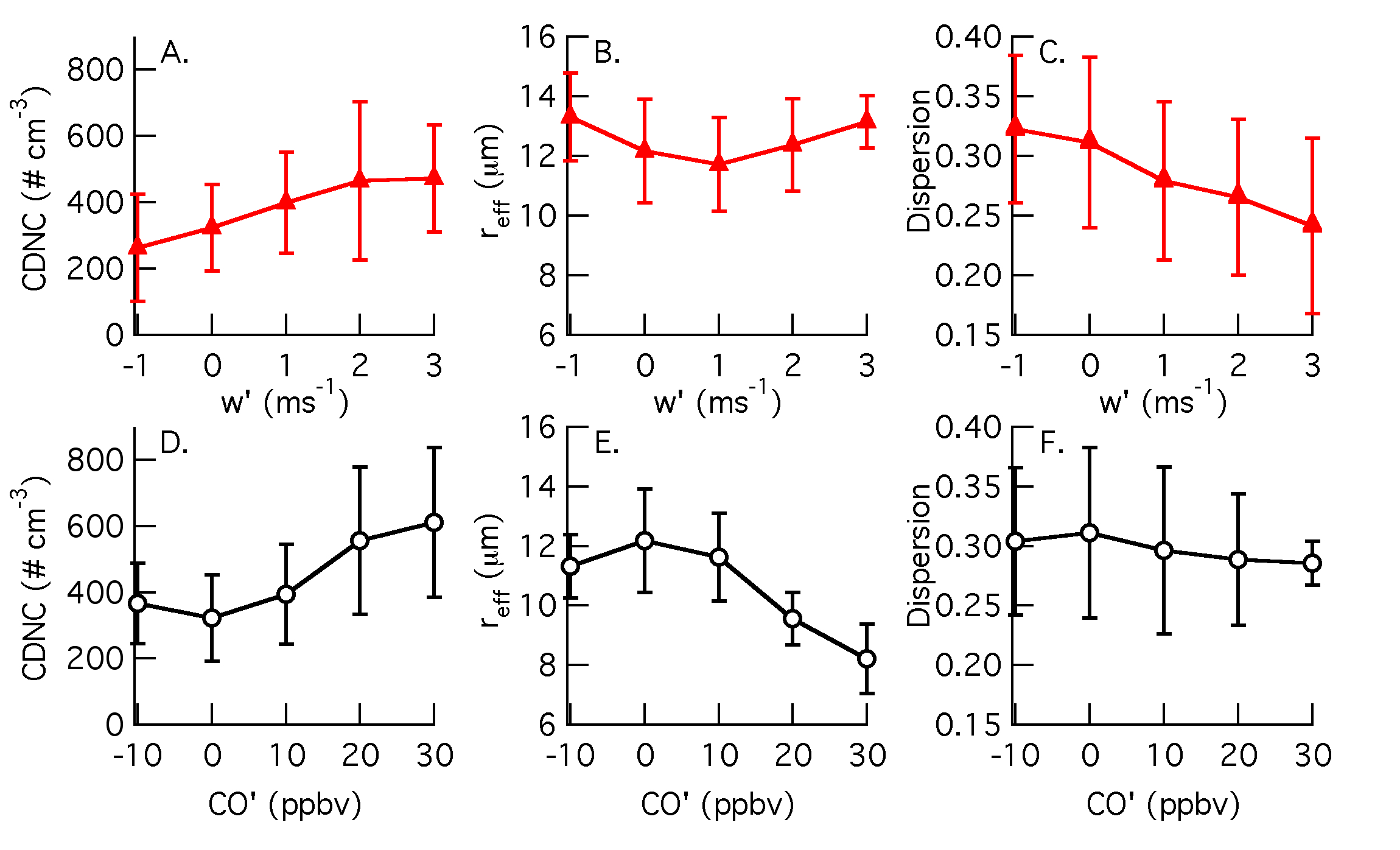Observations of the First Aerosol Indirect Effect in Shallow Cumuli
Submitter:
Berg, Larry — Pacific Northwest National Laboratory
Area of research:
Aerosol Properties
Journal Reference:
Science
Even smaller cities can affect climate through pollution—and do so with fair-weather clouds. That’s the conclusion of scientists studying shallow cumuli (fair-weather clouds) above Oklahoma City. In a study led by Pacific Northwest National Laboratory, researchers found that a significant increase in the amount of light scattered by the clouds was caused by the amount of pollution in the air. The Cumulus Humilis Aerosol Processing Study (CHAPS) gathered data with a specially equipped aircraft to show the impact of aerosols and drafts within clouds on the size distribution of cloud drops and the amount of light scattered by those clouds. The team concluded that human activities are changing clouds in many more locations than previously thought.
Impact
Previous studies on stratocumulus and cumulus clouds have focused on large cities such as Denver, Colorado, and St. Louis, Missouri. Moderately sized cities, with populations in the hundreds of thousands, have largely been ignored when it comes to aerosol’s influence on clouds and climate. Scientists for the CHAPS study used samples and observations gathered onboard a U.S. Department of Energy Gulfstream-1 aircraft. Specially mounted probes measured the cloud drop size distribution, the aerosol particle concentrations, and the turbulent up- and downdrafts. Using carbon monoxide (CO) in the atmosphere as a tracer of typical urban pollution, they accounted for pollutant loading for each individual cloud. One advantage of using CO as a proxy for other pollutants is that it is conserved with passage through clouds. These two factors—sampling and using CO as a tracer—provided an improvement over past studies, which had to rely on conditions below the clouds to identify clean or polluted clouds.
In their analysis, the researchers considered two controlling processes: updraft strength and the level of pollution loading in the clouds. The stronger the updraft, the more cloud droplets are formed and the greater the amount of water in the cloud. The greater the number of particles, the more, though smaller, cloud drops are formed. Increased droplets, whether caused by updraft strength or particle loading, mean an increased amount of light reflected by the cloud. So the team sorted the data to control for the updraft strength. The data was normalized to allow the team to isolate the effects of the particle loading from the cloud up- and downdrafts.
This study shows that pollution from smaller-sized cities is having the same effect as that seen downwind of larger urban areas. A significant increase in the amount of light reflected by the clouds is closely correlated to the amount of pollution emissions from even small urban areas. These aerosol indirect effects show that human impact is changing the properties of the clouds.
Summary
One of the largest areas of uncertainty in studying clouds and the climate they impact is the effects of aerosols—those tiny particles in the air that serve as the seed for cloud droplets. When aerosols interact with and change clouds, they have an indirect effect on the climate. Previous studies have focused on cloud formations near large cities, where large amounts of aerosols are concentrated, or large sheets of stratocumulus. This study provides evidence that pollution from even moderately sized cities has an indirect effect on climate. With this new information, scientists can work to improve regional climate models to better predict climate change impacts.


